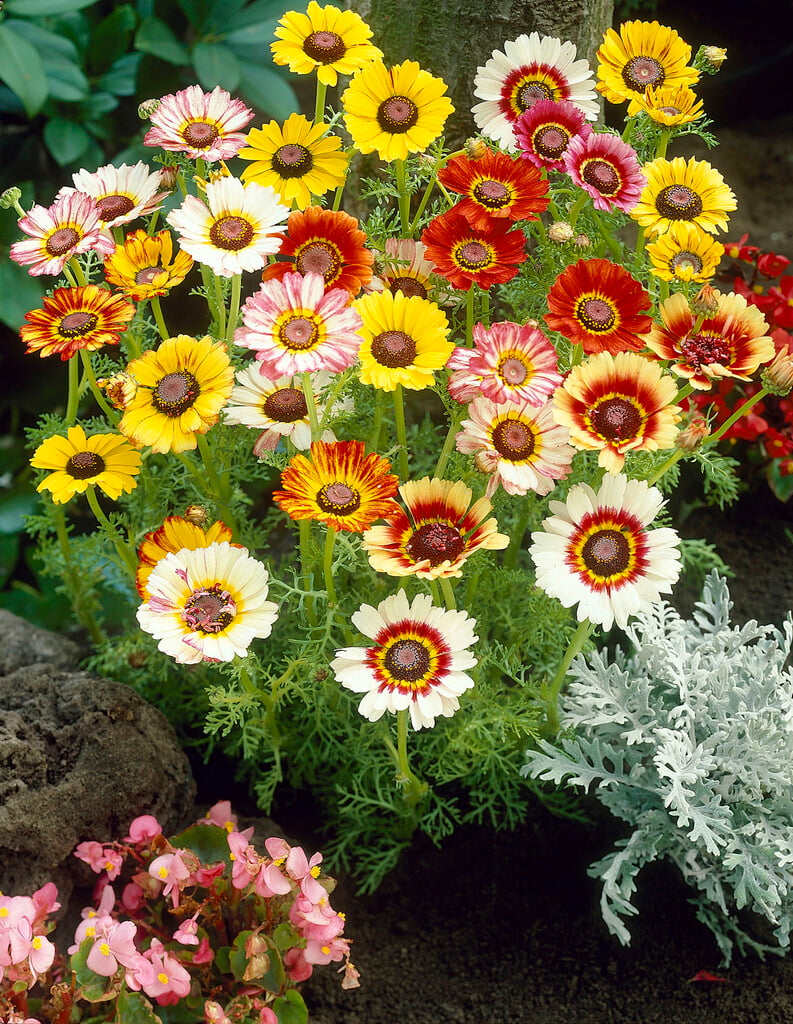Ismelia carinata
tricoloured chrysanthemum
Fast-growing annual about 60-90cm tall, with bright, mid-green, almost succulent leaves to 10cm long and long, stiff stems bearing purple-eyed, daisy-like, yellow, white or brownish-red flowerheads with red or white zones at the bases, produced from late spring to early autumn
Other common names
annual chrysanthemumtricoloured ox-eye daisy
Synonyms
Chrysanthemum tricolorChrysanthemum atrococcineum
see moreIsmelia versicolor
Chrysanthemum carinatum

Size
Ultimate height
0.5–1 metresTime to ultimate height
1–2 yearsUltimate spread
0.1–0.5 metresGrowing conditions
Moisture
Well–drainedpH
Acid, Alkaline, NeutralColour & scent
| Stem | Flower | Foliage | Fruit | |
| Spring | Yellow Red White Purple | Green | ||
|---|---|---|---|---|
| Summer | Yellow Red White Purple | Green | ||
| Autumn | Yellow Red White Purple | Green | ||
| Winter |
Position
- Full sun
Aspect
South–facing or West–facing
Exposure
Exposed or Sheltered Hardiness
H4Botanical details
- Family
- Asteraceae
- Native to GB / Ireland
- No
- Foliage
- Deciduous
- Habit
- Spreading branched
- Genus
Ismelia are annuals with slightly succulent, pinnately dissected levaes and solitary, long-stemmed daisy-like flowerheads to 10cm across in summer and autumn
- Name status
Correct
How to grow
Cultivation
Grow in well-drained moderately fertile soil in full sun
Propagation
Propagate by seed under glass in spring or in situ from spring to early summer
Suggested planting locations and garden types
- City and courtyard gardens
- Cottage and informal garden
- Gravel garden
- Patio and container plants
- Wildflower meadow
- Bedding
- Flower borders and beds
Pruning
Cut down flower stems at the end of autumn
Pests
Generally pest-free
Diseases
Generally disease-free
Get involved
The Royal Horticultural Society is the UK’s leading gardening charity. We aim to enrich everyone’s life through plants, and make the UK a greener and more beautiful place.